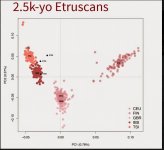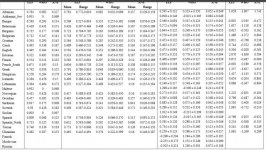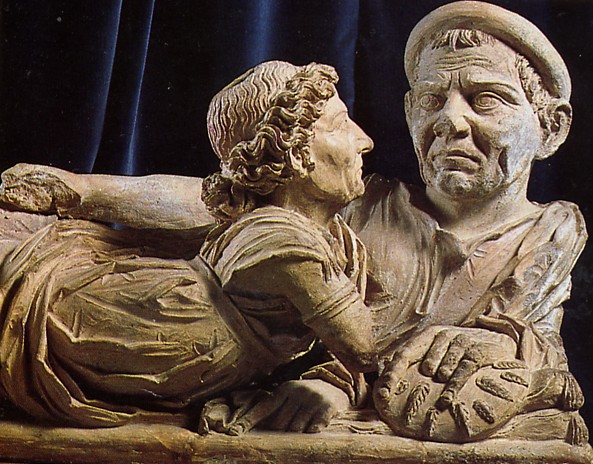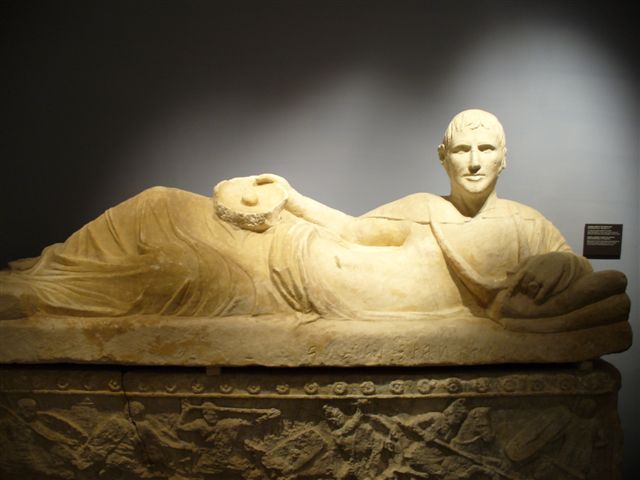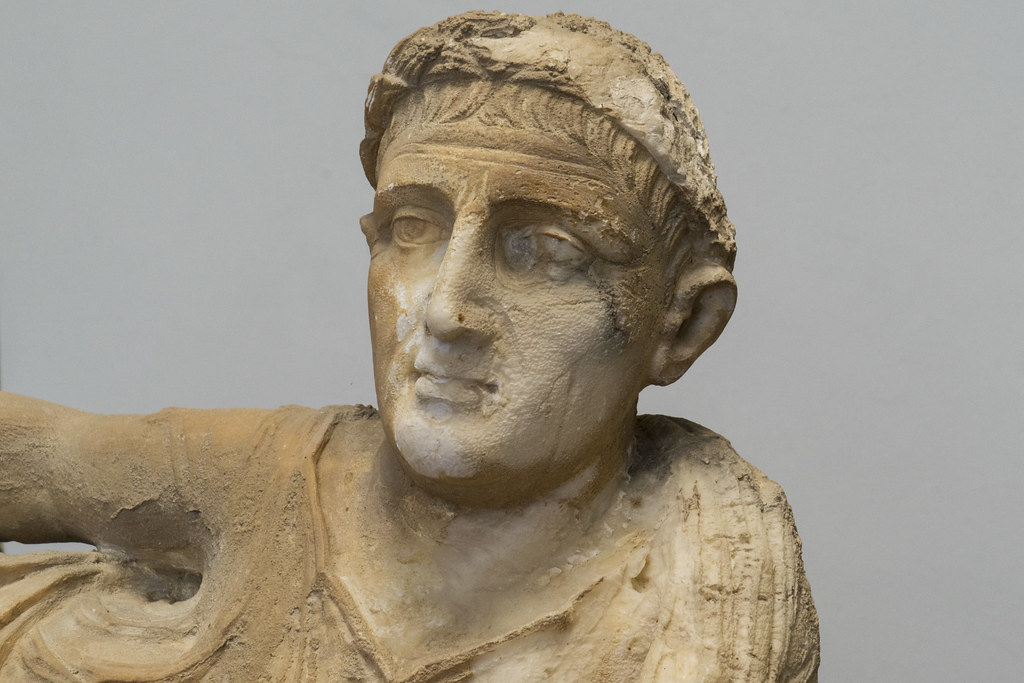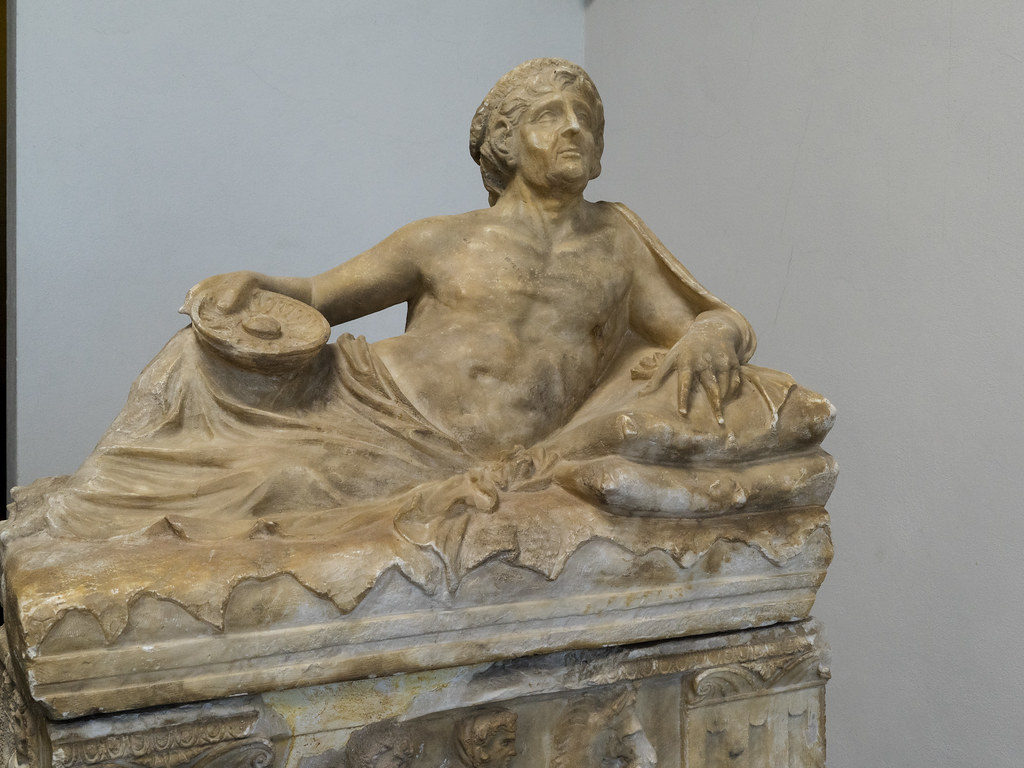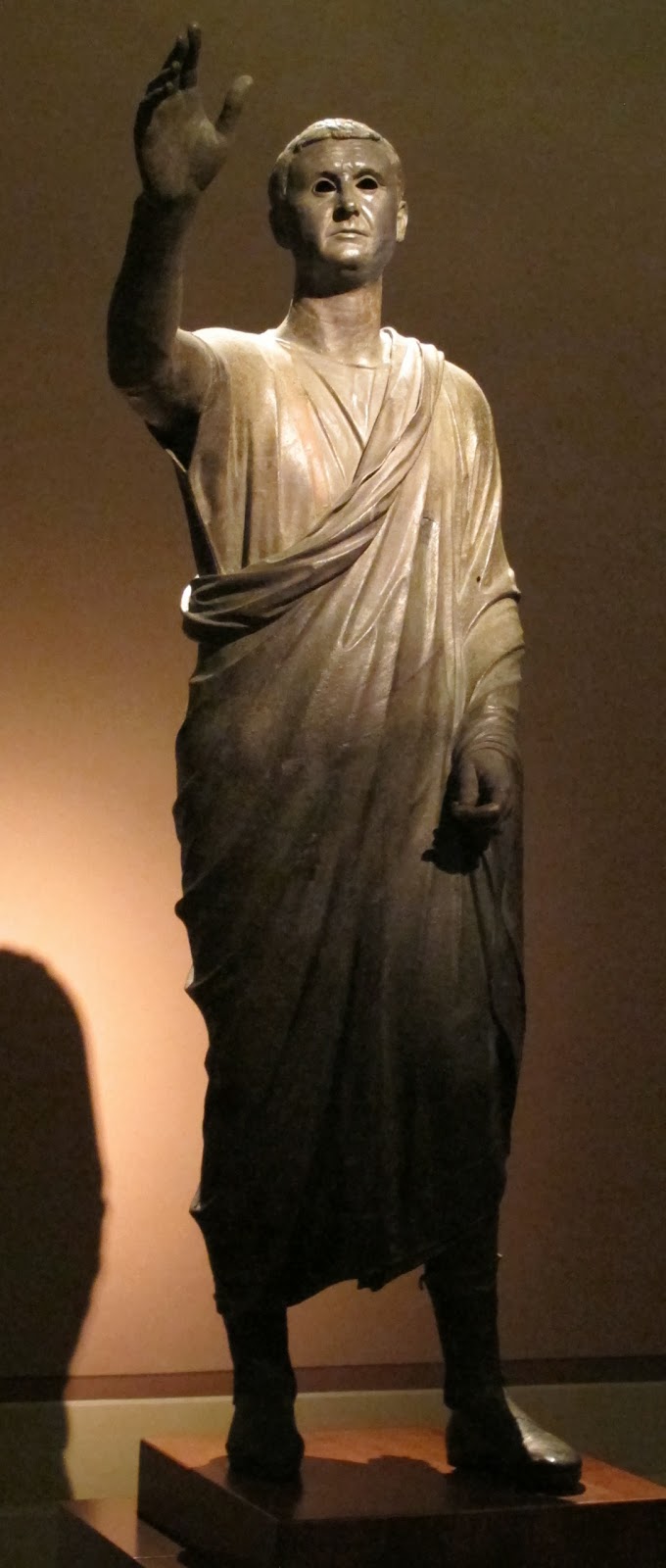Pax Augusta: We need to know the name the location of the burials of these samples and the historical dating.
I think this is very important. Are the remains from later in the first millennium BC or earlier? Are they from the "heartland", or in one of the expansion areas? How far had the "Orientalizing" process gone?
Pax Augusta:I agree, they were not immigrants from Anatolia surely not in the sense of a civilization that one day, bag and baggage, moved from Anatolia to central Italy. Central Italy was already inhabited.
We're presumably talking about elite graves here, yes? So, these are the people who would have had the highest percentages of "new" ancestry in the area.
If we look at the placement of these people on the PCA again, one lands in the IBS area. I don't think Iberians got a massive migration from the east in the first millennium BC.
View attachment 7224
Unless there is something very unexpected in the paper, we are seeing, if anything, an elite migration. Let's not forget that even if we had a way of proving that the supposedly "Anatolian" mtDna came in the first millennium BC rather than in the Neolithic, it was, what, 6% of the total?
It's true that Anatolia has experienced its own population changes in the last 2800 years. However, the largest one would have been the "Turkic" invasion. I'm by no means an expert on Turkish genetics, but I've never seen that influx of genes described as "massive" in nature. In fact, to the best of my recollection, wasn't it estimated at about 10%? Does anyone have a paper that explores that?
Again, looking at the PCA, it seems that one of the other samples lands pretty close to TSI, just a little north. The other one is north of that. I hate to sound like a broken record, but where would northern Italians plot? Would they plot somewhere in that general area as well? Since Bergamo samples are available from the same data set that the authors used, it's curious they weren't included in the plot.
It would also be nice to see the ancient Thracians plotted on there. Here, I'm not focused on the one that was so "Oetzi" like. I don't think anyone is claiming that the inhabitants of central or northern Italy in the first millennium BC were necessarily still all "Oetzi" like. Italy too was impacted by the "Indo-Europeans". That is evident in the archaeology, and has now been verified by genetics analysis. I think we recently discussed that the Haak et al figure for modern Tuscans is 30%. Looking at ancient genomes in Gamba et al, for example, you can see that modern Tuscans plot east of Sardinians, and northern Italians east and north of them. The Haak et al figure for Yamnay in Tuscans is 30%.
So, I'm just if not more interested in seeing where the Bronze Age Thracian would plot, and where the Iron Age one would plot as well. (I realize that it wouldn't be dispositive given the contamination issues, but I still think it would be interesting.)
The question to me is how much did any putative migration from the east in the first millennium BC impact modern central/north Italians...not during the Neolithic, and not even during the Bronze Age, but during the first millennium BC. That's what this whole intellectual puzzle is all about, yes?
As for Bulgarians, they are not transplanted Anatolians either.The Eurogenes plot is of
modern Bulgarians. Their ethnogenesis is not solely EEF; like the Italians, they have been impacted by Indo-European migrations, i.e. the Thracians, and to some extent the Slavs. The same general migration movements affected them both.
Ed. One other thing occurs to me. It's informative to look at the "West Asian" scores of northern Italians. If they plot near these Etruscans, and even some TSI isn't far, then that is approximately the amount that was present at least in Etruria in the first millennium. So, as Fire Haired has noted, not very much came in during the Empire, and that brings us full circle back to Ralph and Coop.
PaxAugusta: That's a cinerarium, surely unrealistic, from Northern Lazio, Southern Etruria. It's similar to the archaich Greek style (kouroi and korai) due to common external cultural influences. I don't think that style depends by the kind of admixture, it's just an artistic style.
That's the problem with discussions about phenotype and the Etruscans. Any art historian would point out that much of Etruscan art is very derivative of Greek art...sometimes the art is just copied wholesale. So, are we looking at "Greek" faces, or "Etruscan" faces, or just "stylized" faces that don't really represent either. That's not of course to say that there weren't "Greek" looking Etruscans.
This is another sarcophagus which is said to be in a "naturalistic" style.
Here are some other representations. I don't know if they are representative of them or not, but they look totally normal to me for modern Italians.



